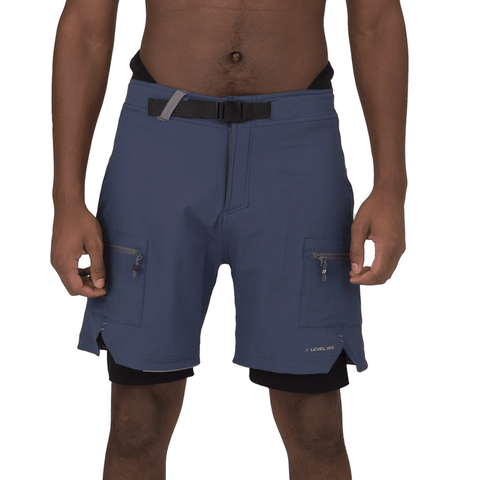Staying Warm on a Budget
Nothing ruins a river experience faster than being cold. In fact, cold water exposure is associated with a higher risk of flush drowning. Luckily, staying warm on the water is easier than ever, thanks to the enormous range and quality of available clothing.
The best way to extend your paddling season is with a dry suit. However, there are other ways to add warmth to your river wardrobe with a friendlier price tag, including dry tops, neoprene wetsuits, neoprene layers, and appropriate foot and hand-wear. Let’s take a closer look at each.
Dry Tops
Dry tops are one of the best alternatives to a full dry suit because, as the name suggests, they keep you dry! A dry top is like a waterproof long-sleeved shirt. Most are made of Gore-Tex or similar material and have latex gaskets at the neck and wrists to keep water out.
Layer your dry top with a spray skirt if you’re kayaking or a pair of dry pants for a fully dry experience (unless you swim). We also recommend wearing warm, non-cotton layers under your dry top for the best protection from the cold.
Dry tops will keep your upper body dry under most conditions. For even more insulation, wear your dry top with a neoprene base layer.
What is Neoprene?
Neoprene is a thick synthetic rubber material made of small enclosed air pockets. The air pockets trap heat and provide insulation against cold water. The thicker the neoprene material, the more heat-trapping air pockets it has, and the warmer it will be. Always research water temperature before deciding which neoprene thickness you need.
Neoprene Thickness
Neoprene warmth and insulation are based on the thickness of the material. Neoprene thickness is measured in millimeters, an important spec to consider when purchasing neoprene.
You should also consider factors like air temperature, water temperature, activity level, amount of time in the water, and personal preference when looking for neoprene apparel. In general, 0.5-2mm is best for summer, 2-4mm works well for shoulder season, and 5+mm is best for cold weather and winter boating or surfing.
There are several neoprene options available to paddlers today, including:
Wetsuits
Top/Bottom Layers
Booties
Wet Socks
Helmet Liners
Gloves/Pogies
Lined Shorts
Wetsuits
Popular in the ocean, wetsuits also work well on the river. Wetsuits come in many styles, from traditional full coverage/full length to sleeveless but with full chest and leg coverage (Farmer John/Jane.) Which one you need depends on your planned use.
River Surfers, SUPers, and paddlers who spend a lot of time in the water will benefit most from a full-coverage wetsuit. On the other hand, rafters and kayakers often prefer the range of motion provided by a Farmer John-style suit.
The best part is wetsuits are more durable than drysuits and keep you warm even when they get holes in them!
Neoprene Layers
Neoprene top and bottom layers are a great alternative to a full, sometimes cumbersome wetsuit. For example, NRS’ neoprene shirts and leggings, called Hydroskin, work as versatile layers. You can mix and match neoprene layers to build a kit for any condition.
However, a full wet suit is the warmer choice because layers alone don’t offer full body coverage and don’t completely seal out water around the midsection.
Neoprene layers are particularly effective when paired with splash gear, such as a splash top or splash pants. Splash gear is similar to rain gear. Like a rain jacket and rain pants, splash gear does a great job keeping water off your skin when you’re, you guessed it, splashed! If you become submerged, splash gear alone won’t be that helpful in keeping you warm.
The splash gear-and-neoprene combination has the advantage of keeping water off your skin and providing insulation should you find yourself in the water. Many commercial outfitters offer their paying guests a Farmer John wetsuit and a splash jacket for spring and colder weather trips. Although it’s not the most stylish look, this combo is very effective at keeping people warm and safe on the water.
Booties
For cold trips, neoprene booties prioritize warmth and offer a good alternative to Astral or other river shoes. Neoprene booties have a solid sole and tread so paddlers aren’t slipping over rocks at the put-in, take-out, or on scouts. However, a full river shoe will provide a bit more traction and support than a bootie.
Wetsocks
If you plan on long portages or lots of rock scrambling, try combining river shoes and neoprene socks for a good balance of warmth and traction. What’s more, you can use neoprene socks over drysuit socks for protection from sand/silt getting between your river shoes and drysuit. The constant friction on the drysuit socks can create pinholes and leaks. Investing in neoprene socks can help prevent this and keep you warm!
Gloves
We always think about our feet and toes, but don’t forget about those hands! Cold hands can be a danger, making it harder to hold and control a paddle or throw a rope. Check out the wide variety of neoprene gloves available from NRS’ Hydroskin line.
Hydroskin is a bit thinner than traditional neoprene, so this line is great for paddlers looking to boat in the shoulder seasons, but maybe not in coldest weather. To learn more about Hydroskin, read our expert review.
Helmet Liner
Save your ears from the cold water with an extra layer of insulation. A neoprene helmet liner, also known as a thermo cap, fits in between your head and your helmet to provide critical warmth during cold sessions. Helmet liners are great for paddlers like playboaters or SUP river surfers, who are consistently being submerged.
Lined Shorts
Some people invest in drysuits or dry pants, others rock board shorts all year long. A happy medium between these two extremes is neoprene-lined shorts, like the Level Six Pro Guide Lined Neoprene Shorts. A cozy fit without compromising ruggedness, these shorts keep paddlers warm in the places that matter. Pair lined shorts with a dry top for warmth and comfort in most conditions (if you are really that resistant to long pants).
SYOTR
Don’t let cold temperatures keep you from the water! If you have the right gear, including a dry top or neoprene layers, you can brave most conditions. Remember to consider the forecast, water temperature, wind speeds, and your own personal thermostat before deciding what gear to wear and pack.
In the meantime, stay safe, and we’ll see you on the river!
Originally published November 18, 2020.
Updated April 24, 2023.
Updated the update June 7, 2023.
And finally, the updated update got an update on June 23, 2023.

